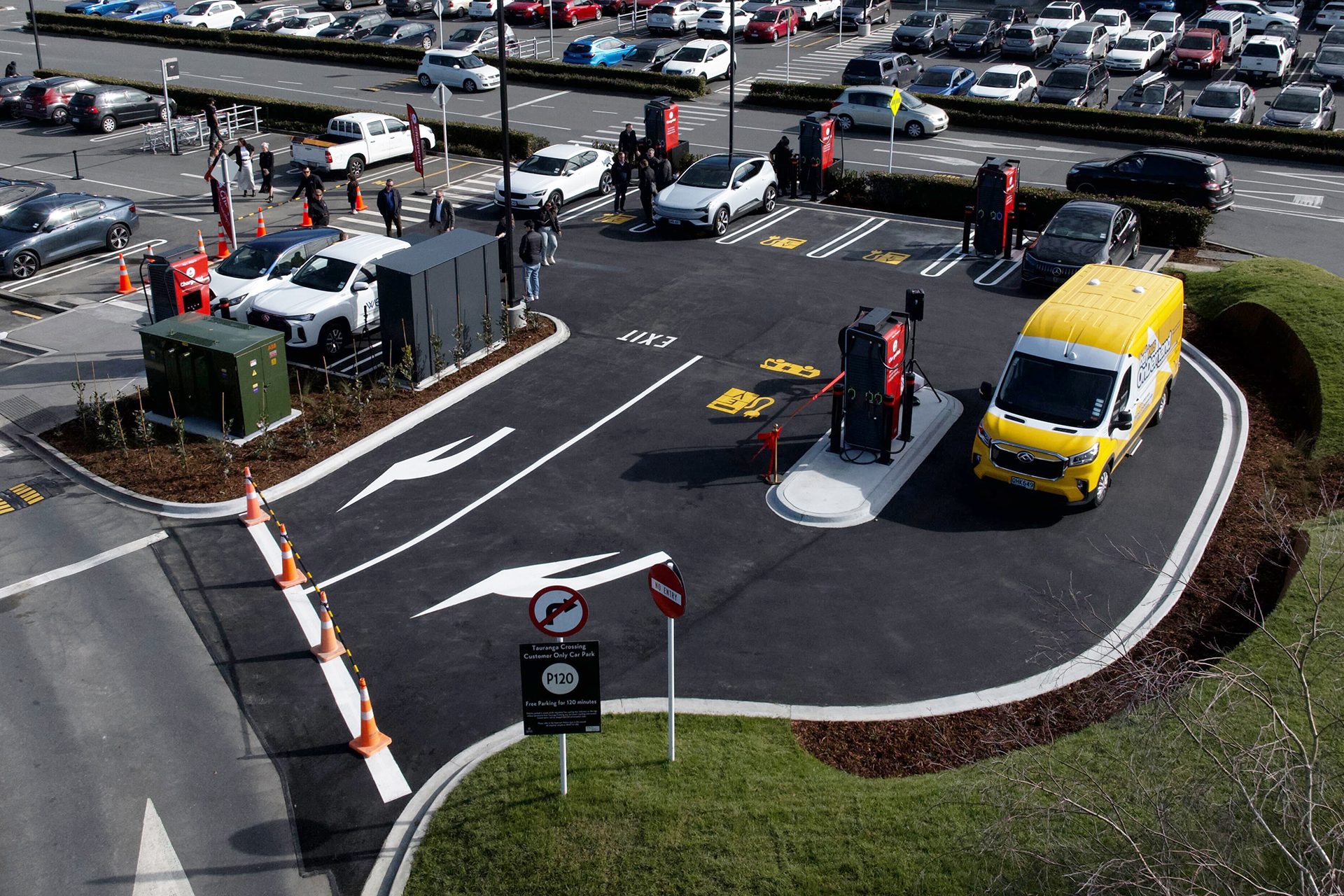Feature article
EV Charging Stations Across NZ
One thing people who are new to EVs need to know is the subject of charging. We discuss EVs charger network across NZ.

One thing that people who are new to electric vehicles need to get their head around is the subject of charging. The vast majority of your charging is done at home, and preferably off peak to help manage the load on the electricity grid. If you sign up to the right power plan, the company should incentivise this with cheaper night rates. But this is a subject for another time; here we are discussing the EV charger network across New Zealand.
Those that don’t like the idea of EVs will tell you that the charging infrastructure in New Zealand is rubbish, and is one of the many reasons not to go electric. But refer to our first point; you do the majority of your recharging at home. While the fast charging infrastructure in New Zealand isn’t amazing, it’s far from rubbish, and improving each month. Now enough of these fast chargers are dotted around the country to make journeying far and wide in your EV possible.
Plan your journey
You will need to plan your journey in your EV, with more thought than you would if you were driving a petrol-powered car. This is because there are not nearly as many recharging spots as there are gas stations around the place. While there are many chargers along main highways, some regions of NZ aren’t as well covered.
As of September 2024, there are 1248 public charging units around the country. Of those, 826 are in the North island and 422 in the South island. The Auckland and Canterbury regions have just under 300 each though those in Canterbury are spread out over a much larger area.
Places like Gisborne (9), Hawkes Bay (15), the West coast (11), Taranaki (13) and Marlborough (17) aren’t so well serviced.
It’s a better idea to top up along the way, taking on 20 mins of charge in one spot, and then another 20 mins further down the track, as opposed to trying to maximise your range and pulling up to the charger with one per cent left. Because, what do you do if you arrive to find the charger has faulted? Which can, and does happen. Chargers are busiest during long weekends and holiday periods, so expect longer waits then.
Helping you plan
There are a few different resources to help you find the nearest charger. These include EVRoam, a live database of New Zealand’s charging infrastructure, which is operated by the NZTA. Plugshare has extensive coverage of the country too. ABRP (a better route planner) helps you plan your road trip, suggesting the best route via charge stations. Google maps and Apple maps also show charging stations in your location and along your route.
Not all chargers are equal
Not all fast DC chargers are equal. They all have different rates of charge which determines how fast they recharge the battery. Further complicating the matter, your car has its limitations as to how fast it can be charged. For example, the BYD Atto 3 can take a maximum DC charge rate of 80kW. The Hyundai Ioniq 5 N has a maximum of 350kW. And there are different plugs too. Most fast DC chargers in NZ offer the CCS type plug, while fewer offer the older CHAdeMO plug.
There aren’t many ultra fast chargers in NZ, most are of the 50kW variety, but there now are more 75kW and 150kW units about. According to EECA, 37 per cent of chargers in New Zealand are of 25 to 50kW variety, 17 per cent are rated between 70kW to 150kW, and 11 per cent are classed as ultra rapid (between 175kW to 475kW).
Don’t forget your charging app
Different operators manage their own charging networks across the country. These include ChargeNet, which is the biggest operator with over 400 stations, while there is also Meridian Energy, Z Energy, BP and Tesla. There are smaller regional operators too like Hikotron in the Waikato and Zero which is mainly in Wellington and Christchurch.
In order to charge at a station, you will need to download each company's app. You can't simply rock up, plug in and tap your credit card for it to work.
But once you have downloaded the app and set up an account, the process is fairly straightforward. Park your car next to the charging station, use the app to scan the code on the station, follow the instructions, plug your car in and everything should work magically. Each app will be able to manage the charge, telling you how much energy you have taken on and how much it costs. That leads us to pricing.
How much does it cost to charge at a public fast charger?
It is more expensive to charge at a fast charger than it is at home. Each company charges a different rate, but it's usually about 75 to 85 cents per kWh. Some have an idling fee, which is charged when your car’s battery is full, but it's still plugged in and parked, occupying the station. This is usually $1 per minute, which encourages people not to leave their car parked at the charging station.
Find the EV that’s right for you. Shop EV listings on Trade Me Motors.
Author
Other articles you might like







